Blog
-
Macular Degeneration & Cellular Energy
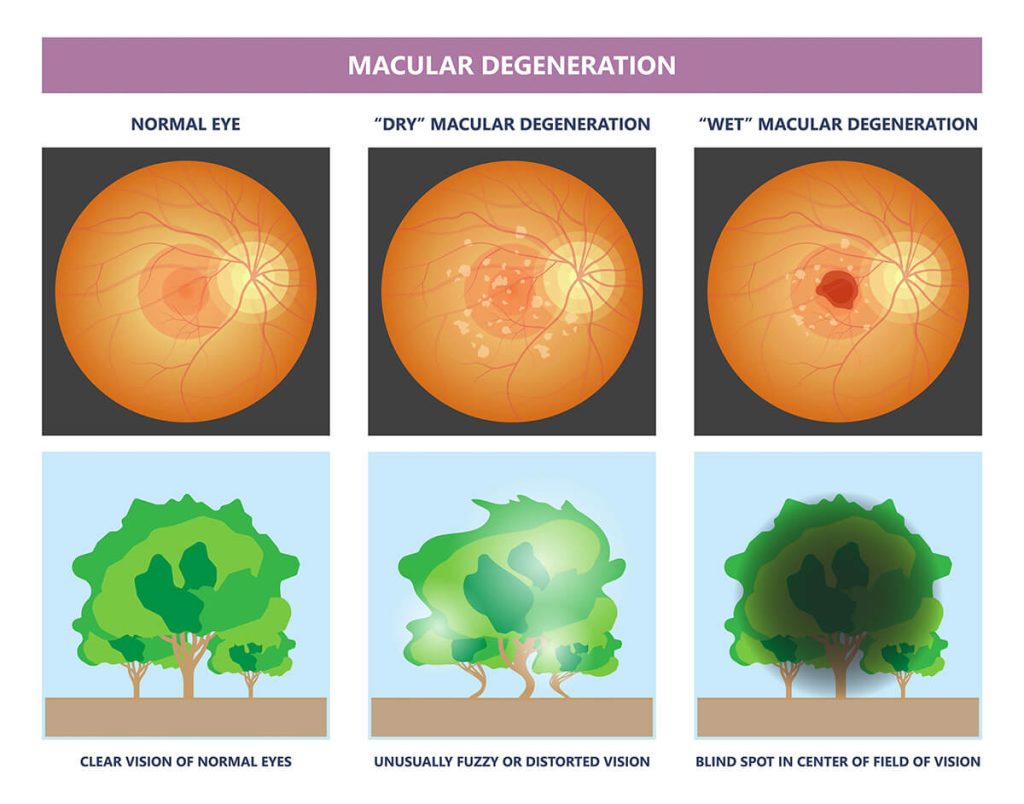
The retina is one of the most energy-demanding tissues in the body due to its high concentration of mitochondria. In age-related macular degeneration (AMD), mitochondrial dysfunction is a key factor in progressive vision loss Macular Society+12PubMed+12Eye Q Optometry |+12Verywell Health. Restoring energy production at the cellular level offers a strategic target.
Photobiomodulation (PBM): Harnessing Red & Near‑Infrared Light
What it is:
Photobiomodulation (PBM), also known as low‑level red/near‑infrared light therapy, uses specific wavelengths (typically 600–1000 nm) that penetrate deep into tissues to stimulate mitochondrial enzymes—especially cytochrome c oxidase—boosting ATP production and reducing inflammation Wikipedia+1Eye Q Optometry |+1.Application to AMD:
- The Valeda Light Delivery System (by LumiThera) delivers controlled red/NIR light to the retina. In patients with early to intermediate dry AMD, it has been shown to slow disease progression, lessen drusen burden, and improve visual acuity by two lines or more WebMD+9BrightFocus Foundation+9SEED+9.
- An NIH-funded program (LightSight I & III clinical trials) demonstrated enhanced retinal cell energy, healthier tissue, and meaningful improvements in central vision SEED.
Clinical Evidence
- A 2025 Baylor College of Medicine study reviewed published trials of PBM in non-exudative AMD. It found that PBM improved visual function (visual acuity and contrast sensitivity) and reduced anatomical markers such as drusen volume and geographic atrophy PubMed+1macular.org+1.
- A UCL-led study demonstrated that brief exposure (3 minutes/day over two weeks) to 670 nm light enhanced color contrast sensitivity and low-light vision in participants over 40, indicating mitochondrial activation in the retinaVerywell Health+1Wikipedia+1.
Why Energy-Based Treatment Matters
Problem Light Therapy Effect Mitochondrial dysfunction Restores ATP generation and retinal cell energy SEED+2Eye Q Optometry |+2Verywell Health+2 Chronic inflammation Light therapy downregulates inflammatory pathways Accumulation of drusen & geographic atrophy Data shows slower progression and reduced drusen after PBM These energy-based strategies directly target root causes of retinal degeneration, rather than merely treating symptoms.
Who May Benefit
- People with early or intermediate dry AMD (20/30 to 20/100), not yet candidates for injections or surgerymacular.org+15BrightFocus Foundation+15Clinical Trials Arena+15.
- Individuals seeking a noninvasive, low-risk approach to preserve vision and retinal health.
- Patients open to adjunctive therapy, complementing supplements (like AREDS2) and lifestyle effortsfellow.vision-relief.com+2BrightFocus Foundation+2Verywell Health+2.
Future Directions & Considerations
- Larger and longer trials are ongoing—such as EUROLIGHT and expanded PBM studies—to verify long-term effects and optimal treatment schedules macular.org+4Clinical Trials Arena+4Wikipedia+4.
- PBM is not a cure. Current evidence supports slowing progression, not reversing existing damage or treating wet AMD .
- Use only FDA-authorized devices under clinician guidance to ensure safety and effectiveness BrightFocus Foundation.
Conclusion
Energy-based therapies like photobiomodulation offer a compelling, science-grounded approach to macular degeneration—revitalizing mitochondrial energy, reducing inflammation, and slowing degeneration in a noninvasive manner. Early clinical results are promising, but broader validation is needed to optimize protocols and define long-term impact on vision preservation.
Sources
- BrightFocus Foundation & retina specialists on PBM’s role in slowing dry AMD BrightFocus Foundation+1BrightFocus Foundation+1
- Photobiomodulation in non-exudative AMD: mitochondrial repair, inflammation reduction, visual improvementsPubMed+1Eye Q Optometry |+1
- Macular Society and UCL findings on red light’s effect on retinal energy systems Clinical Trials Arena+11Macular Society+11Verywell Health+11
- NIH-supported LumiThera trials (LightSight I & III) demonstrating PBM benefits BrightFocus Foundation+3SEED+3Clinical Trials Arena+3
- Mechanisms of PBM and low-level light therapy overview Wikipedia
- Safety reminders: FDA authorization and clinician-led use
-
Discerning Normal Pronation from Overpronation
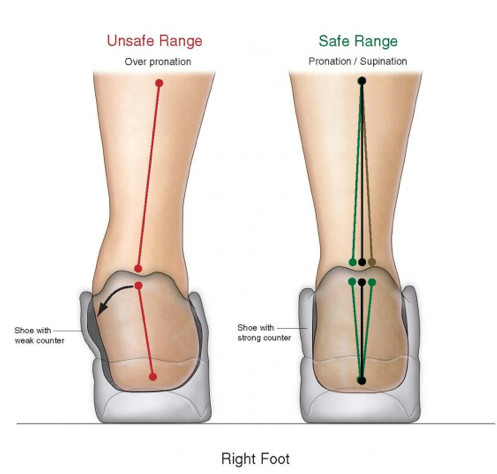
Pronation is a natural and essential movement of the foot that occurs when the foot rolls inward during the gait cycle. It allows for shock absorption, even weight distribution, and proper force transfer during walking and running. However, when pronation becomes excessive—known as overpronation—it can compromise foot stability and contribute to dysfunction throughout the kinetic chain.
What is Normal Pronation?
Normal pronation occurs when the foot rolls inward approximately 15 degrees after the heel strikes the ground. This controlled motion helps absorb shock and allows the foot to adapt to different surfaces. During the mid-stance phase of gait, the arch flattens slightly, and the body moves smoothly over the foot.
Key features of normal pronation:
- Slight inward roll of the foot and ankle
- Arch flattens slightly, then recoils
- Weight transitions evenly from heel to forefoot
- Tibia remains aligned over the foot
What is Overpronation?
Overpronation occurs when the foot rolls inward beyond the normal range, often accompanied by excessive flattening of the arch. This results in poor foot alignment and can lead to instability, altered mechanics, and overuse injuries.
Key indicators of overpronation:
- Noticeable inward collapse of the ankle
- Flattening or loss of the medial arch
- Increased wear on the inside edge of shoes
- Medial knee deviation or internal tibial rotation
- Associated pain in the plantar fascia, tibialis posterior, or medial knee
Overpronation can be structural (due to foot shape) or functional (resulting from muscle weakness, mobility deficits, or previous injuries). Identifying it requires observation during dynamic movement—especially walking, running, or single-leg tasks.
Why It Matters
The difference between normal pronation and overpronation often comes down to degree and control. While normal pronation supports efficient movement, overpronation can disrupt biomechanics and increase stress on joints and soft tissue.
For clinicians, coaches, and movement specialists, the goal is not to eliminate pronation but to optimize it—ensuring it occurs within a healthy, functional range.
-
HONING YOUR SENSES: TRAINING YOUR SENSES AS YOU AGE IS ESSENTIAL FOR HEALTH
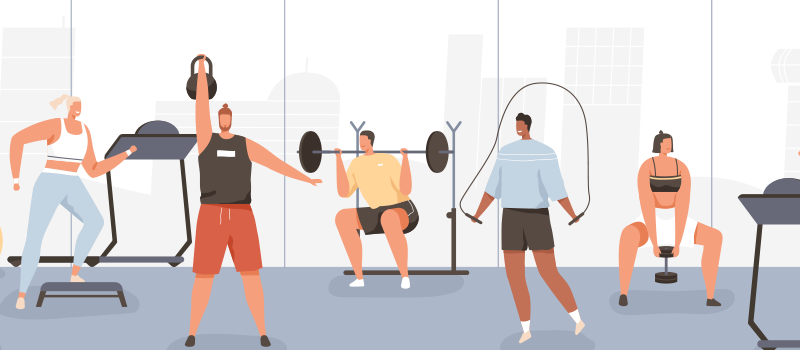
As we grow older, most health conversations focus on strength, mobility, cardiovascular fitness, or brain health. But one powerful area is often overlooked—our senses. Sight, hearing, touch, smell, taste, balance, and proprioception (body awareness) all subtly decline with age. This decline can directly affect our safety, independence, and quality of life.
Here’s the good news: just like your muscles and brain, your senses can be trained. And doing so may be one of the most underrated strategies for staying sharp, stable, and engaged as you age.
WHY SENSORY HEALTH MATTERS
Your senses are the gateway between your body and the outside world. They help you avoid danger, stay upright, enjoy your meals, and communicate effectively. When sensory systems decline:
- Falls become more likely due to reduced depth perception, balance, or hearing.
- Cognitive decline can speed up—research shows that poor sensory input affects brain health.
- Daily enjoyment suffers, from muted tastes to difficulty hearing conversations.
You don’t have to accept this as normal aging. You can train your senses.
SIMPLE WAYS TO TRAIN EACH SENSE
1. VISION
- Track moving objects with your eyes to build coordination.
- Shift your focus from near to far to improve flexibility.
- Get more natural light and rest your eyes from screens.
- Practice figure-8 or diagonal eye movements.
2. HEARING
- Practice sound recognition—sit quietly and name the sounds you hear.
- Try selective listening drills in noisy environments.
- Avoid constant loud noise and use noise-canceling headphones when needed.
3. TOUCH
- Use different surfaces (grass, gravel, sand) barefoot to stimulate foot nerves.
- Roll textured balls in your hands to sharpen tactile feedback.
- Contrast hot/cold showers to stimulate the nervous system.
4. SMELL & TASTE
- Smell herbs or spices blindfolded to increase discrimination.
- Eat slowly and try to identify individual ingredients.
- Rotate your food choices to expose your senses to variety.
5. BALANCE & PROPRIOCEPTION
- Practice standing on one foot or walking on uneven ground.
- Use stability pads or wobble boards to challenge joint awareness.
- Include closed-eye balance drills for extra sensory engagement.
THE BRAIN-SENSE CONNECTION
Your senses don’t operate alone—they’re connected to your brain and nervous system. Every sensory drill strengthens your brain’s ability to interpret information, stay alert, and respond quickly. Sensory training is brain training in disguise.
INTEGRATE IT INTO YOUR DAILY LIFE
- Add 3–5 minutes of sensory drills to your warm-up or morning routine.
- Use your non-dominant hand for daily tasks to activate new brain areas.
- Take “sensory walks” where you focus on sights, sounds, and smells.
- Eat meals without distractions to fully engage taste and smell.
FINAL THOUGHT
Aging doesn’t have to mean fading.
Honing your senses can help you stay stable, sharp, and connected to the world around you. It’s a simple but powerful way to support your health, independence, and brain as the years go by.Train your senses—because what you don’t use, you lose.
-
Is Energy Loss the Root of Disease? The Physics Behind Biochemistry
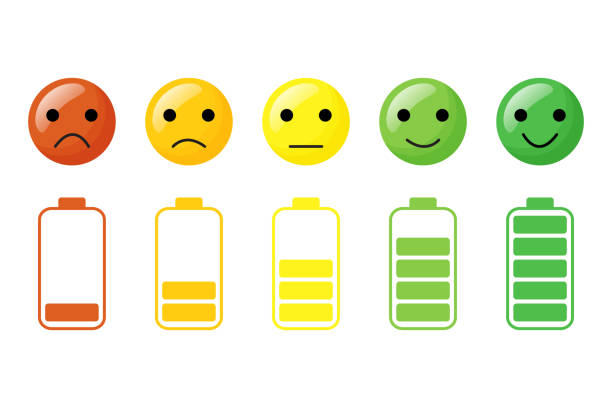
Modern medicine has largely been built on biochemistry — hormones, enzymes, neurotransmitters, and pharmaceuticals designed to tweak them. But an increasing number of scientists, researchers, and functional health practitioners are challenging that paradigm.
They’re asking a deeper question:
What if biochemistry isn’t the root… but the result?
And what if the true root of disease lies in something even more elemental: cellular energy loss?
🔋 The Cell Is an Engine — and Energy Is Its Fuel
Every cell in your body is powered by tiny energy factories called mitochondria. These organelles take in nutrients and oxygen and produce ATP (adenosine triphosphate) — the cell’s energy currency. That energy fuels everything:
- Muscle contraction
- Brain signaling
- Hormone production
- Immune defense
- Tissue repair
When energy levels drop, the cell can no longer maintain its internal balance — known as homeostasis. And over time, this lack of power can lead to dysfunction, degeneration, and disease.
⚛️ Physics Comes Before Chemistry
Here’s the shift in thinking:
Traditional medicine often starts with chemistry — measuring or manipulating the substances in the body (glucose, cholesterol, serotonin, etc.).But cells don’t run on chemicals — they run on energy.
Energy governs chemistry.When a cell is low on energy, the following happens:
- Enzymes stop working properly
- Membranes lose integrity
- DNA repair falters
- Inflammation escalates
- Toxins accumulate
This suggests that the physical state of energy production and transfer is foundational to the chemical reactions that follow. The problem isn’t just biochemical imbalance — it’s bioenergetic failure.
🧬 What the Research Says
Some pioneering scientists are leading this reframing of disease:
🔹 Dr. Doug Wallace (Children’s Hospital of Philadelphia)
- Widely regarded as the father of mitochondrial medicine
- Has shown that many chronic diseases — from autism to Alzheimer’s — have mitochondrial dysfunction at their core
- Believes genetics alone can’t explain these diseases, but energy failure can
🔹 Dr. Robert Naviaux (UC San Diego)
- Proposed the “Cell Danger Response” model
- Suggests that when energy drops, cells shift into a protective state that resembles disease
- Believes restoring energy metabolism is key to healing chronic conditions
🔹 Dr. Jack Kruse (Neurosurgeon turned mitochondrial researcher)
- Argues that modern diseases are driven by a mismatch between our biology and environment — especially light, magnetism, and circadian rhythms
- Emphasizes that quantum biology and mitochondrial efficiency are more foundational than genetic mutations
🧠 Implications for Health and Healing
This model shifts our entire approach:
- Instead of asking what chemical is out of balance, ask what energy process has broken down.
- Instead of starting with pills, start with light, movement, breath, and sleep — the foundations of mitochondrial health.
This is why basic habits like:
- Morning sunlight
- Red light therapy
- Deep sleep
- Clean movement and breath
- Eliminating toxins that disrupt the mitochondria
…can have a profound impact on performance and healing — even before we reach for supplements or prescriptions.
🔄 A Return to Root Cause
Understanding disease as an energy loss problem reframes everything:
- Alzheimer’s as “type 3 diabetes” (mitochondrial failure in the brain)
- Cancer as uncontrolled growth in an energetically bankrupt environment
- Autoimmunity as a danger signal stuck in the “on” position
- Even depression as an energetic collapse in neuronal signaling
This isn’t to say biochemistry doesn’t matter — it does. But it’s a downstream effect. Physics — especially bioenergetics — is upstream.
✝️ The Aruka Perspective
At Aruka, we often say that health is not just the absence of disease — it’s the presence of life. And life requires energy.
Scripture says, “In Him was life, and that life was the light of men.” (John 1:4)
When our bodies are aligned with design — when they receive the rhythms, nourishment, movement, rest, and light they were made for — energy flows. Cells heal. Systems recover.
Disease, then, is not just a condition to be managed. It’s a signal — pointing us back to the loss of vitality that begins with energy failure.
And restoring health starts by restoring the source.
📚 Sources
- Wallace, D. C. (2010). Mitochondrial DNA mutations in disease and aging. Environmental and Molecular Mutagenesis.
- Naviaux, R. K. (2014). Metabolic features and regulation of the healing cycle—A new model for chronic disease pathogenesis and treatment. Mitochondrion.
- Wallace, D. C. (2005). A mitochondrial paradigm of metabolic and degenerative diseases, aging, and cancer: a dawn for evolutionary medicine. Annual Review of Genetics.
- Kruse, J. (2013–2020). Mitochondrial Series, jackkruse.com
- Nicolson, G. L. (2007). Mitochondrial dysfunction and chronic disease. Integrative Medicine.
- Lane, N. (2005). Power, Sex, Suicide: Mitochondria and the Meaning of Life. Oxford University Press.
-
Closing the Loop: Why Brain-to-Body AND Body-to-Brain Challenges Work
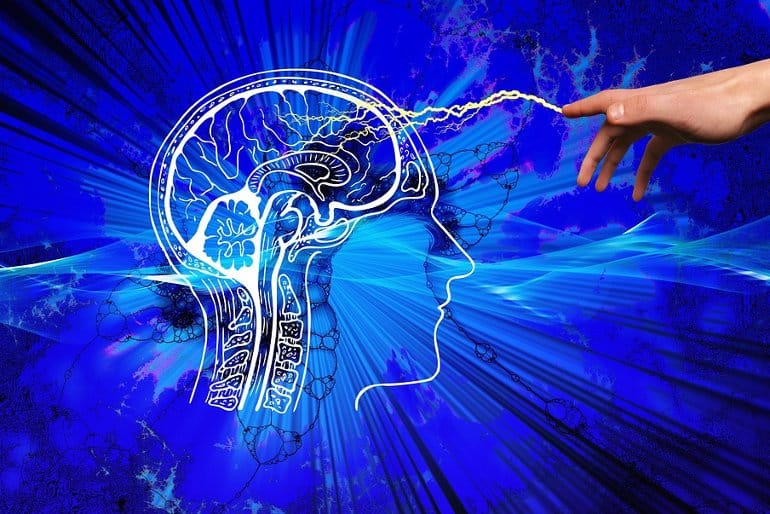
In the performance world, we spend a lot of time training the body: sets, reps, load, tempo, angles. But if we want to truly elevate athleticism, we must also train the system that governs the body—the brain.
At Aruka, we teach that performance isn’t just built from the ground up—it’s built from the inside out. That’s why combining brain-to-body and body-to-brain challenges is one of the most powerful tools you can use in training, rehab, or return-to-play.
Let’s unpack what that means—and why it matters now more than ever.
What Is Brain-to-Body Training?
Brain-to-body training starts with the nervous system and flows down into the body. It includes activities that prime the brain to improve physical execution, such as:
- Reaction drills
- Visual tracking and peripheral awareness tasks
- Pattern recognition under movement constraints
- Dual-task exercises (e.g., naming shapes while sprinting cones)
- Vestibular re-training
This primes the central nervous system (CNS), improves processing speed, and sharpens motor control. You’re not just making the athlete stronger—you’re helping them access that strength faster and more precisely.
What Is Body-to-Brain Training?
Body-to-brain training takes movement and uses it to influence the brain. This includes:
- Rhythmic locomotion (walking, crawling, skipping, etc.)
- Complex coordination drills (e.g., cross-crawls, bear crawls, Turkish get-ups)
- Balance training with visual or vestibular inputs
- Movement-based problem solving (e.g., navigating an obstacle course)
This kind of movement increases neuroplasticity, supports sensory integration, and enhances executive function. In rehab, it reconnects broken pathways. In athletes, it raises the ceiling for skill development.
Why Combining Both Closes the Loop
The real breakthrough comes when we combine brain-to-body and body-to-brain challenges in the same session, circuit, or season plan. This is what we call “closing the loop.”
- Brain-to-body drills wake up the CNS and prepare it to receive input.
- Body-to-brain drills provide rich, sensory feedback and drive adaptation back up to the brain.
Together, this creates a feedback-rich environment that builds faster skill acquisition, motor learning, and movement resilience.
Practical Application: What This Looks Like
In our Aruka Neurogenic Circuits, a typical loop might include:
- Visual tracking + auditory cue response (brain-to-body)
- Crawling variation across different surfaces (body-to-brain)
- Reactive change of direction under time constraint (brain-to-body)
- Unilateral balance under distraction (body-to-brain)
You’re challenging input and output, processing and performance, stability and speed. This is where athletes start to not just move better—but think better while moving.
When to Use Neurogenic Training
- Youth development: Build wiring early while the brain is highly plastic
- Return to play: Reconnect pathways disrupted by injury
- Elite performance: Push the ceiling of decision-making under fatigue
- General population: Support brain health, focus, and movement confidence
This isn’t just for pros. It’s for anyone who wants to move, perform, or think at a higher level.
Final Thought
Strength and speed matter—but the nervous system is the organizer of it all.
If we ignore it, we miss the greatest force multiplier in the body.Close the loop. Train both directions. Watch the difference.
Research Highlights
- Dual-task training improves motor function and attention in both athletic and aging populations.
Beurskens et al., 2014; Al-Yahya et al., 2011 - Neuroplasticity is driven by novel, challenging movement—especially when combined with cognitive tasks.
Taubert et al., 2010; Herold et al., 2018 - Motor learning accelerates with feedback-rich, variable environments involving sensory and cognitive demand.
Wulf & Lewthwaite, 2016 - Cognitive-motor integration enhances executive function and reduces injury risk.
Vestberg et al., 2021; Grooms et al., 2015
-
Deceleration – The Missing Link of Speed Training
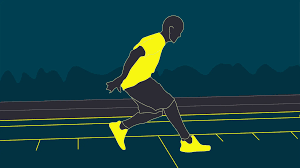
In the pursuit of speed, athletes and coaches often focus on acceleration, sprint mechanics, and max velocity. While these are essential components, one of the most overlooked and undertrained aspects of speed is deceleration—the ability to absorb, control, and redirect force efficiently.
Deceleration isn’t the opposite of speed. It’s the control system that allows speed to be useful in sport. Without it, athletes lack the ability to stop, change direction, or safely recover from explosive efforts.
Why Deceleration Matters
Most injuries—especially non-contact injuries—occur during deceleration or transition phases, not max effort sprints. ACL tears, hamstring strains, and ankle sprains are commonly linked to poor braking mechanics.
Key roles of deceleration include:
- Eccentric strength control to slow the body safely
- Joint stability during high-speed transitions
- Movement precision for change of direction and agility
- Energy absorption to reduce impact on tendons and ligaments
An athlete who cannot decelerate properly is at a higher risk for injury and performance breakdown, regardless of how fast they can run.
What Deceleration Looks Like
Effective deceleration involves:
- Proper body angles (hip and knee flexion)
- Center of mass control
- Strong eccentric strength in the posterior chain
- Ground contact mechanics that support rapid stopping without collapse or stiffness
Poor deceleration often appears as:
- Upright posture with little bend
- Excessive forward momentum
- Loud or unstable foot strikes
- Inability to re-accelerate quickly or efficiently
Training for Deceleration
To improve deceleration, athletes must train:
- Eccentric strength (e.g., Nordic hamstring curls, slow tempo lunges)
- Landing mechanics (e.g., drop landings, single-leg hops with stick)
- Reactive drills that require quick stops or redirects
- Controlled deceleration from sprints, shuffles, and bounds
Training should include both pre-planned and reactive deceleration tasks to simulate real-game movement demands.
The Takeaway
True speed isn’t just about how fast you go—it’s about how well you stop. Deceleration is the braking system of performance. Without it, acceleration becomes dangerous. With it, athletes gain control, efficiency, and resilience.
Speed training without deceleration is incomplete.
Teach it. Train it. Measure it.
Sources
- Hewett, T. E., Ford, K. R., & Myer, G. D. (2006). Anterior cruciate ligament injuries in female athletes: Part 1. The American Journal of Sports Medicine, 34(2), 299–311.
- Duhig, S. J., et al. (2016). Effect of deceleration load on muscle damage in professional Australian footballers. International Journal of Sports Physiology and Performance, 11(8), 1059–1065.
- Spiteri, T., et al. (2015). Contribution of strength characteristics to change of direction and agility performance in female basketball athletes. Journal of Strength and Conditioning Research, 29(8), 2205–2213.
- Harper, D. J., & Kiely, J. (2018). Damaging nature of decelerations: Do we adequately prepare players? BMJ Open Sport & Exercise Medicine, 4(1), e000379.